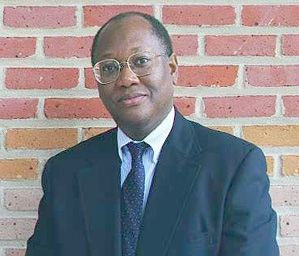![]()
James H. Curry

Born:
Birthplace:
B.S.(1970) M.S. University of California at Berkeley; M.S. (1971) University of California at Berkeley
Ph.D. (1976) University of California, Berkeley
thesis: Transition to Turbulence in Finite-Dimensional Approximations to the Boussinesq Equations; Advisor: Oscar Lanford, IIIArea of Research Interests: Applied Mathematics, Atmospherics
: Associate Director and Professor of Applied Mathematics at the University of Colorado-Boulder.
URL: http://amath.colorado.edu/faculty/curry/
email: James.H.Curry@Colorado.EDUAt the age of 12 years, Dr. James Curry found a physics book in the library and thought it was "the most amazing thing I had ever seen." "Of course, I didn't understand it," he admits, "but I was fascinated by the mathematical symbols and equations. In high school, I realized that mathematics was a special language that can be used to understand much of the universe. I set a goal for myself to learn calculus and take the advanced college placement course." Curry received the support of Mary Perry-Smith, a mathematics teacher at Oakland Technical High School in California. "She coached me and convinced me that I could have a good future in mathematics," he says.
When Curry went to the National Center for Atmospheric Research in Boulder, Colorado on his first postdoctoral fellowship, he arrived a few weeks before a new Cray supercomputer. "It was a wonderful machine, and it steered my research into the computer-assisted study of dynamic systems." After he took a faculty post at the University of Colorado at Boulder, he applied for an [National Science Foundation] M[inority] R[esearch] I[nitiation] grant to use computers to help understand complex systems such as weather, flame propogation, and basic mathematics. "The MRI award gave me an opportunity to integrate myself into the mathematics department, and to develop my own research projects," Curry comments. "It freed me from the arduous task of searching for funds, a tough and time-consuming job for a new professor." Curry is now a professor of mathematics and the associate director of the Program in Applied Mathematics at the University of Colorado at Boulder.
RESEARCH NOTES
An essential element in the study of applied mathematics is the development of computational strategies for solving nonlinear equations. Frequently such equations are embedded in larger problems, e.g. solving either two point boundary value problems or free boundary problems. In their simplest form, nonlinear equations are solved using iterative methods. Within this context they can be viewed as dynamical systems and may exhibit chaos, sensitivity to initial conditions, and the like. A component of Professor Curry's research is concerned with both the success and failure of iterative methods for solving equations snd with mathematical questions of interest to Atmospheric and Oceanic Scientists. Dr.
James H. Curry has published 18 papers. You can download some of Dr. James H. Curry's recent papers at his home page: http://amath-www.colorado.edu/appm/faculty/curry/
SELECTED PUBLICATIONS
(with Lora Billings) On noninvertible mappings of the plane: eruptions, Chaos 6 (1996), 108--120.
(with Martha N. Limber) On the dynamics of shooting methods for solving Sturm-Liouville problems, Comm. Appl. Nonlinear Anal. 1 (1994), 1--24.
(with Sharon L. Blish) On the geometry of factorization algorithms, Computational solution of nonlinear systems of equations, Lectures in Appl. Math. 26 (1990), 47--60.
On zero finding methods of higher order from data at one point, J. Complexity 5 (1989), 219--237.
(with Stuart L. Fiedler) On the dynamics of Laguerre's iteration: $Z\sp n-1$, Phys. D 30 (1988), 124--134.
(with C. Eugene Wayne) On the nonpathological behavior of Newton's method, Fluids and plasmas: geometry and dynamics, Contemp. Math. 28 (1984), 407--418.
(with Lucy Garnett and Dennis Sullivan) On the iteration of a rational function: computer experiments with Newton's method, Comm. Math. Phys. 91 (1983), 267--277.
On computing the entropy of the Hénon attractor, J. Statist. Phys. 26 (1981), 683--695.
On some systems motivated by the Lorenz equations: numerical results, Mathematical problems in theoretical physics, Lecture Notes in Phys., 116 (1980), 316--330.
(with James A. Yorke) A transition from Hopf bifurcation to chaos: computer experiments with maps on ${\bf R}\sp{2}$, The structure of attractors in dynamical systems, Lecture Notes in Math. 668 (1978 ), 48--66.
references: Dr. Curries web page, Math. Reviews
SUMMA James Curry web page http://www.maa.org/summa/archive/curryJH.htm
![]()
BACK TO CONTENTS
The web pages
MATHEMATICIANS
OF THE AFRICAN DIASPORA
are brought to you by
The Mathematics Department of
The State University of New York at Buffalo.
They are created and maintained
by
Scott W. Williams
Professor of Mathematics